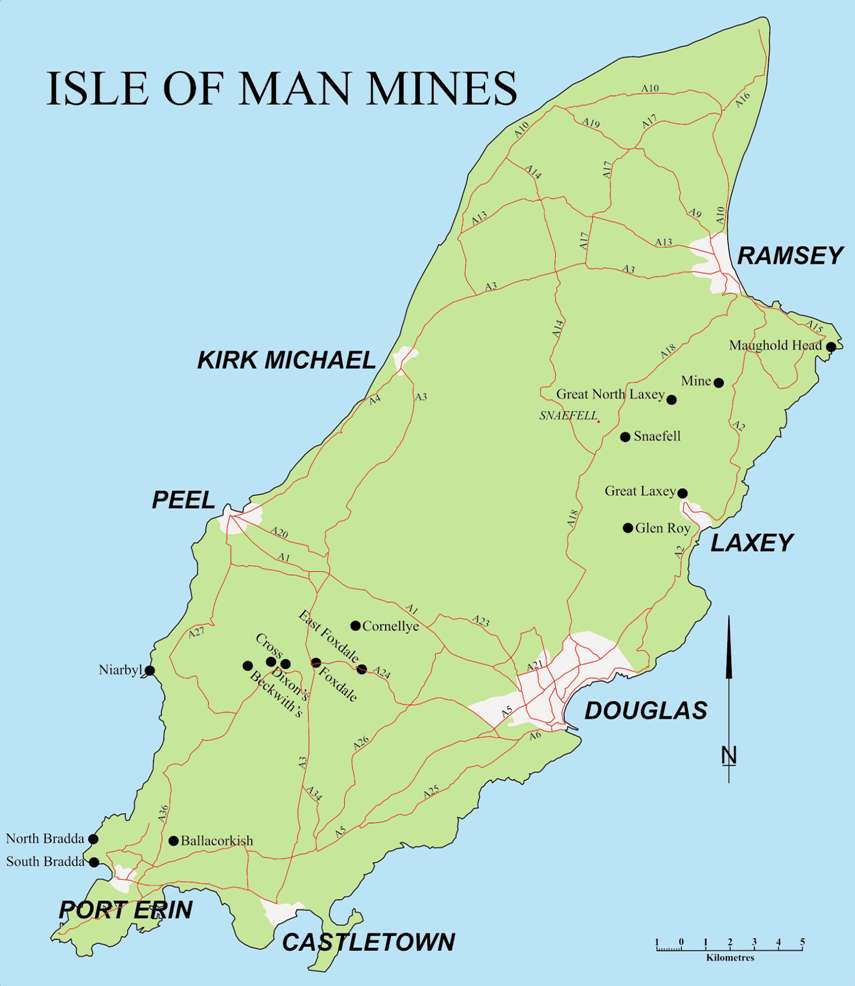Most of the Island is composed of what were originally marine sediments, deposited from 490 to 470 million years, and collectively known as the Manx Group. These Ordovician sandstones and pebbly mudstones were later metamorphosed to become highly faulted and folded slates etc.
Around 320 Mya tectonic activity saw the Earth’s crust in this area moving apart, causing deep fractures down which surface water flowed. This water, which was eventually heated to between 100 and 200°C., dissolved elements, like lead, zinc, copper, iron and sulphur, before rising and re-depositing them as it cooled on contact with shallower rocks. Repetition of this process eventually filled fissures with crystalline minerals, sometimes in economically valuable amounts.
In some respects the Isle of Man is similar to Shropshire, with deep mines, mainly for lead and zinc. Many were pumped by waterwheel at first, then steam engines were used to pump and wind ore from the depths worked. Unlike most parts of the UK, however, little or no ore was smelted on the island and it was shipped to smelters on the mainland.
Return to previous page

